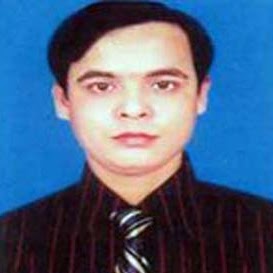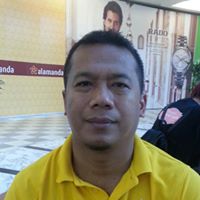Md Rezwanur Rahman
age ~51
from Austin, TX
- Also known as:
-
- Rezwanur M Rahman
- Rezwanur Rahaman
- Rahman R Dr
- Rahman Rezwanur
- Raham Rezwan
- Rezwan Raham
- Phone and address:
- 4701 Monterey Oaks Blvd #1131, Austin, TX 78749
Md Rahman Phones & Addresses
-
s
- 4701 Monterey Oaks Blvd #1131, Austin, TX 78749
- Pflugerville, TX
- Beaverton, OR
- Kingsville, TX
- Lynnwood, WA
- Addison, TX
- Tempe, AZ
Real Estate Brokers

Md Rahman, Portland OR Engineering Manager
view sourceSpecialties:
Owner
Work:
Inel Corp
4800 Nw Saltzman Rd, Portland, OR 97229
5038877386 (Office)
4800 Nw Saltzman Rd, Portland, OR 97229
5038877386 (Office)
Experience:
17 years
Wikipedia References

Md. Atiur Rahman Atik
Us Patents
-
Testing Memories
view source -
US Patent:7437531, Oct 14, 2008
-
Filed:Sep 30, 2004
-
Appl. No.:10/955420
-
Inventors:Michael Spica - Hillsboro OR, US
Hehching Harry Li - Portland OR, US
Md Rezwanur Rahman - Hillsboro OR, US -
Assignee:Intel Corporation - Santa Clara CA
-
International Classification:G06F 12/02
G11C 29/18
G01R 31/28 -
US Classification:711217, 714718, 714728
-
Abstract:Methods and apparatus to test memories, such as, for example, caches of processors, are disclosed. In one aspect, an apparatus may include a pseudo random address generation unit, such as, for example, including a linear feedback shift register, to generate pseudo random memory addresses, and a deterministic data generation unit, such as, for example, including a state machine, to generate deterministic data to be written to the pseudo random memory addresses. Computer systems and other electronic systems including such apparatus are also disclosed.
-
Integrated Circuit Testing With Laser Stimulation And Emission Analysis
view source -
US Patent:7777507, Aug 17, 2010
-
Filed:Mar 26, 2007
-
Appl. No.:11/691480
-
Inventors:Daniel Richard Bockelman - Tigard OR, US
Yuan-Chuan Steven Chen - Portland OR, US
Christopher John Brookreson - Saint Helens OR, US
Md Asifur Rahman - Portland OR, US -
Assignee:Intel Corporation - Santa Clara CA
-
International Classification:G01R 31/302
G01R 31/26 -
US Classification:324752, 324765
-
Abstract:A diagnostic tool for testing an integrated circuit device directs a beam of laser energy to stimulate at least a portion of the device. In one mode, electromagnetic waves from said device may be detected at the same time in response to the stimulation. A processor collects image data and determines as a function of the collected image data whether the device has a defect. Other embodiments are described and claimed.
-
Multi-Magnet Stabilized Spin Orbit Torque Mram
view source -
US Patent:20200105324, Apr 2, 2020
-
Filed:Sep 27, 2018
-
Appl. No.:16/143816
-
Inventors:- Santa Clara CA, US
Sasikanth Manipatruni - Portland OR, US
MD Tofizur Rahman - Portland OR, US
Noriyuki Sato - Hillsboro OR, US
Christopher Wiegand - Portland OR, US
Ian Young - Portland OR, US -
Assignee:INTEL CORPORATION - Santa Clara CA
-
International Classification:G11C 11/16
H01L 43/10
H01L 43/08
H01L 27/22 -
Abstract:A magnetic tunnel junction (MTJ) for use in a magnetic spin orbit torque random access memory device (SOT MRAM) is described. Magnetic tunnel junctions described herein include a multi-magnet free layer over a spin orbit torque electrode. The multi-magnet free layer includes at least three sub-layers: a first magnetic sub-layer in direct contact with the SOT electrode having a first magnetic stability, a second magnetic sub-layer having a second magnetic stability greater than the first magnetic stability, and a magnetic coupling layer between the first and second sub-layers.
-
Multi-Layer Spin Orbit Torque Electrodes For Perpendicular Magnetic Random Access Memory
view source -
US Patent:20200006637, Jan 2, 2020
-
Filed:Jun 29, 2018
-
Appl. No.:16/024714
-
Inventors:- Santa Clara CA, US
Sasikanth MANIPATRUNI - Portland OR, US
Chia-Ching LIN - Portland OR, US
Kaan OGUZ - Beaverton OR, US
Christopher WIEGAND - Portland OR, US
Angeline SMITH - Hillsboro OR, US
Noriyuki SATO - Hillsboro OR, US
Kevin O'BRIEN - Portland OR, US
Benjamin BUFORD - Hillsboro OR, US
Ian YOUNG - Portland OR, US
MD Tofizur RAHMAN - Portland OR, US -
International Classification:H01L 43/02
H01L 27/22
H01L 43/12 -
Abstract:Embodiments herein relate to a system, apparatus, and/or process for producing a spin orbit torque (SOT) electrode that includes a first layer with a first side to couple with a free layer of a magnetic tunnel junction (MTJ) and a second layer coupled with a second side of the first layer opposite the first side, where a value of an electrical resistance in the first SOT layer is lower than a value of an electrical resistance in the second SOT layer and where a current applied to the SOT electrode is to cause current to preferentially flow in the first SOT layer to cause a magnetic polarization of the free layer to change directions. During production of the SOT electrode, the second layer may act as an etch stop.
-
Psttm Device With Multi-Layered Filter Stack
view source -
US Patent:20190288190, Sep 19, 2019
-
Filed:Jun 3, 2019
-
Appl. No.:16/430201
-
Inventors:- Santa Clara CA, US
Kevin P. O'Brien - Portland OR, US
Christopher J. Wiegand - Portland OR, US
MD Tofizur Rahman - Portland OR, US
Brian S. Doyle - Portland OR, US
Mark L. Doczy - Portland OR, US
Oleg Golonzka - Beaverton OR, US
Tahir Ghani - Portland OR, US
Justin S. Brockman - Portland OR, US -
Assignee:Intel Corporation - Santa Clara CA
-
International Classification:H01L 43/12
G11C 11/16
H01L 43/10
H01F 10/32
H01F 41/30
H01L 43/08 -
Abstract:MTJ material stacks, pSTTM devices employing such stacks, and computing platforms employing such pSTTM devices. In some embodiments, perpendicular MTJ material stacks include a multi-layered filter stack disposed between a fixed magnetic layer and an antiferromagnetic layer or synthetic antiferromagnetic (SAF) stack. In some embodiments, non-magnetic layers of the filter stack include at least one of Ta, Mo, Nb, W, or Hf. These transition metals may be in pure form or alloyed with other constituents.
-
Perpendicular Spin Transfer Torque Magnetic Mechanism
view source -
US Patent:20190280188, Sep 12, 2019
-
Filed:Dec 28, 2016
-
Appl. No.:16/348364
-
Inventors:- Santa Clara CA, US
Christopher WIEGAND - Portland OR, US
MD Tofizur RAHMAN - Portland OR, US
Daniel OUELETTE - Portland OR, US
Angeline SMITH - Hillsboro OR, US
Juan ALZATE VINASCO - Portland OR, US
Charles KUO - Hillsboro OR, US
Mark DOCZY - Portland OR, US
Kaan OGUZ - Beaverton OR, US
Kevin O'BRIEN - Portland OR, US
Brian DOYLE - Portland OR, US
Oleg GOLONZKA - Beaverton OR, US
Tahir GHANI - Portland OR, US -
International Classification:H01L 43/02
H01F 10/32
G11C 11/16
H01L 43/12
H01F 41/30 -
Abstract:An apparatus comprises a magnetic tunnel junction (MTJ) including a free magnetic layer, a fixed magnetic layer, and a tunnel barrier between the free and fixed layers, the tunnel barrier directly contacting a first side of the free layer, a capping layer contacting the second side of the free magnetic layer and boron absorption layer positioned a fixed distance above the capping layer.
-
High Stability Free Layer For Perpendicular Spin Torque Transfer Memory
view source -
US Patent:20190221734, Jul 18, 2019
-
Filed:Sep 30, 2016
-
Appl. No.:16/327603
-
Inventors:- Santa Clara CA, US
Kevin P. O'Brien - Portland OR, US
Brian S. Doyle - Portland OR, US
Mark L. Doczy - Beaverton OR, US
Charles C. Kuo - Hillsboro OR, US
Daniel G. Ouellette - Portland OR, US
Christopher J. Wiegand - Portland OR, US
MD Tofizur Rahman - Portland OR, US
Brian Maertz - Santa Barbara OR, US -
Assignee:INTEL CORPORATION - Santa Clara CA
-
International Classification:H01L 43/08
H01L 43/10
H01L 43/12
H01L 27/22 -
Abstract:Systems, apparatus, and methods for magnetoresitive memory are described. An apparatus for magnetoresitive memory includes a fixed layer, a free layer, and a tunneling barrier between the fixed layer and the free layer. The free layer is a new alloy consisting of a composition of Cobalt (Co), Iron (Fe), and Boron (B) intermixed with a non-magnetic metal according to a ratio. A thin insert layer of CoFeB may optionally be added between the alloy and the tunneling barrier.
-
Ferromagnetic Resonance Testing Of Buried Magnetic Layers Of Whole Wafer
view source -
US Patent:20190049514, Feb 14, 2019
-
Filed:Apr 1, 2016
-
Appl. No.:16/073688
-
Inventors:- Santa Clara CA, US
KAAN OGUZ - Beaverton OR, US
CHRISTOPHER J. WIEGAND - Portland OR, US
MARK L. DOCZY - Beaverton OR, US
BRIAN S. DOYLE - Portland OR, US
MD TOFIZUR RAHMAN - Portland OR, US
OLEG GOLONZKA - BEAVERTON OR, US
TAHIR GHANI - PORTLAND OR, US -
Assignee:INTEL CORPORATION - Santa Clara CA
-
International Classification:G01R 31/28
G01R 31/315
H01L 21/66
G01R 33/09
H01L 43/12 -
Abstract:Techniques are disclosed for carrying out ferromagnetic resonance (FMR) testing on whole wafers populated with one or more buried magnetic layers. The techniques can be used to verify or troubleshoot processes for forming the buried magnetic layers, without requiring the wafer to be broken. The techniques can also be used to distinguish one magnetic layer from others in the same stack, based on a unique frequency response of that layer. One example methodology includes moving a wafer proximate to a waveguide (within 500 microns, but without shorting), energizing a DC magnetic field near the target measurement point, applying an RF input signal through the waveguide, collecting resonance spectra of the frequency response of the waveguide, and decomposing the resonance spectra into magnetic properties of the target layer. One or both of the DC magnetic field and RF input signal can be swept to generate a robust set of resonance spectra.
Resumes

Md Siddiqur Rahman Austin, TX
view sourceWork:
Screwfix Direct
London
Jul 2011 to Dec 2014
Service Assistant, Highway Branch National Physical Laboratory
Jan 2014 to Sep 2014
Industrial Engineering Project IT Intern
London
Mar 2013 to Jul 2013
RaiseOnline Training National Health Service, MEND Programme
London
Feb 2011 to Apr 2011
Volunteer
London
Jul 2011 to Dec 2014
Service Assistant, Highway Branch National Physical Laboratory
Jan 2014 to Sep 2014
Industrial Engineering Project IT Intern
London
Mar 2013 to Jul 2013
RaiseOnline Training National Health Service, MEND Programme
London
Feb 2011 to Apr 2011
Volunteer
Education:
Queen Mary University of London
London
Sep 2014
Masters of Science in Telecommunication Systems Queen Mary University of London
London
Jun 2013
Bachelor of Engineering in Telecommunications
London
Sep 2014
Masters of Science in Telecommunication Systems Queen Mary University of London
London
Jun 2013
Bachelor of Engineering in Telecommunications
Skills:
Programming: MATLAB (Advanced), Java (Intermediate), C (Intermediate), HTML (Intermediate) Software: Microsoft Office Package, CST Microwave Studio, Agilent ADS, LabVIEW Operating Systems: Windows, Linux, Unix

Md Rahman
view sourceLocation:
United States

Md Rahman
view sourceLocation:
United States

----
view sourceLocation:
Irving, Texas
Industry:
Information Technology and Services
Work:
----- - ------ Jan 2009 - Nov 2009
-------
-------

Md Rahman
view sourceLocation:
United States

Md Rahman
view sourceLocation:
United States

Md Rahman
view sourceLocation:
United States

Md Rahman
view sourceLocation:
United States
Name / Title
Company / Classification
Phones & Addresses
Owner/Director
MR Engineering Ltd
Engineering Consultants
Engineering Consultants
8112 16 A Ave SW, Edmonton, AB T6X 0H8
7808070016
7808070016
Owner/Director
MR Engineering Ltd
Engineering Consultants
Engineering Consultants
7808070016
ITCLOUD TECHNOLOGIES , CORP
License Records
Md B Rahman
Phone:
2392445872
License #:
221190 - Expired
Category:
Health Care
Issued Date:
Jul 26, 2010
Effective Date:
Jan 14, 2014
Expiration Date:
Dec 31, 2011
Type:
Certified Nursing Assistant
Vehicle Records
-
Md Rahman
view source -
Address:7916 Ladera Verde Dr, Austin, TX 78739
-
VIN:5FNRL38767B051113
-
Make:HONDA
-
Model:ODYSSEY
-
Year:2007
Medicine Doctors

Md Mahfuzur Rahman
view sourceSpecialties:
Hospitalist
Internal Medicine
Internal Medicine
Education:
Sir Salimullah Medical College (1997)

Md Saidur Rahman
view sourceSpecialties:
Hospitalist
Internal Medicine
Internal Medicine
Education:
Rajshahi Medical College (2001)
Myspace
Googleplus

Md Rahman
Work:
Student
Education:
National university of Bangladesh - B.B.S

Md Rahman
Work:
Student
Education:
Tongi pilot school & girls collages

Md Rahman
Education:
National university of bangladesh - Political science
Relationship:
Married

Md Rahman
Work:
Independent Television Limited - Executive (2011)

Md Rahman

Md Rahman

Md Rahman

Md Rahman
Flickr

Mizan Md Rahman
view source
Md Rahman Shihab
view source
Md Saidur Rahman Rahman
view source
Amran Md Rahman
view source
Md Siddiqur Rahman Rahman
view source
Md Rahman Khan
view source
Md Moidur Rahman Rahman
view source
Md Oliur Rahman Rahman
view sourceClassmates

cal- state university los...
view sourceGraduates:
Md Rahman (2007-2011),
Trang le (1998-2002),
David Zhang (1985-1989),
Melody Holdsworth (1990-1994),
Zolzaya Myagmar (2006-2010)
Trang le (1998-2002),
David Zhang (1985-1989),
Melody Holdsworth (1990-1994),
Zolzaya Myagmar (2006-2010)
Youtube
Get Report for Md Rezwanur Rahman from Austin, TX, age ~51





























